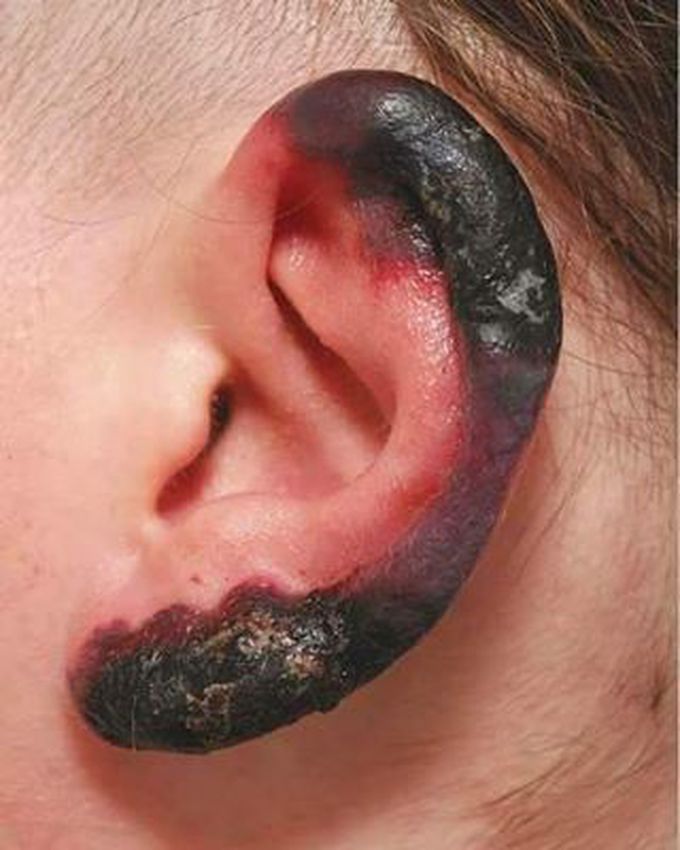

Wojtek MDabout 8 years ago

Winter is coming...and this picture is the reason you need to cover your ear and be warm.
This is a frostbite due to decrease in tempreture! Its usually treated by rewarming the affected limb, if necrosis occur like in this picture, surgery is indicated(debridment or amputation) the amputation can be delayed (forzen in january, amputate in july) unless infection occurs!!
Other commentsSign in to post comments. You don't have an account? Sign up now!
Related posts
DeafnessFrost biteFrostbiteAnatomía del oído medioFrost biteFrostbite StagesManagement of FrostbiteFuction of ears: Your ears have two main functions: hearing and balance.
Hearing: When sound waves enter your ear canal, your tympanic membrane (eardrum) vibrates. This vibration passes on to three tiny bones (ossicles) in your middle ear. The ossicles amplify and transmit these sound waves to your inner ear. Once the sound waves reach your inner ear, tiny hair cells called stereocilia transform the vibrations into electrical energy and send it along nerve fibers to your brain.
Balance: Your inner ear contains semicircular canals filled with fluid and hair-like sensors. When you move your head, the fluid inside these loop-shaped canals sloshes around and moves the hairs. The hairs transmit this information along the vestibular nerve to your brain. Finally, your brain sends signals to your muscles to help you stay balanced.Parts of ears: The three main parts of your ear include the outer ear, middle ear and inner ear. Your tympanic membrane (eardrum) separates your outer ear and middle ear.
Outer ear (external ear)
Your outer ear is the part of your ear that’s visible. It’s what most people mean when they say “ear.” Also called the auricle or pinna, your outer ear consists of ridged cartilage and skin, and it contains glands that secrete earwax. Its funnel-shaped canal leads to your eardrum, or tympanic membrane.
Middle ear
Your middle ear begins on the other side of your tympanic membrane (eardrum). There are three tiny bones in this area — the malleus, incus and stapes. (Healthcare providers refer to these three bones as the ossicles.) They transfer sound vibrations from your eardrum to your inner ear. Your middle ears also house the eustachian tubes, which help equalize the air pressure in your ears.
Inner ear
Your inner ear contains two main parts: the cochlea and the semicircular canals. Your cochlea is the hearing organ. This snail-shaped structure contains two fluid-filled chambers lined with tiny hairs. When sound enters, the fluid inside of your cochlea causes the tiny hairs to vibrate, sending electrical impulses to your brain.
The semicircular canals, also known as the labyrinthine, are responsible for balance. They tell your brain which direction your head is moving.Ear infection (otitis media)
Ear infections most commonly occur in your middle ear. Otitis media develops when bacteria and viruses become trapped in your middle ear. This type of infection is more likely to affect children than adults. Ear infection treatment usually involves antibiotics. In severe cases, ear tubes may be necessary.

